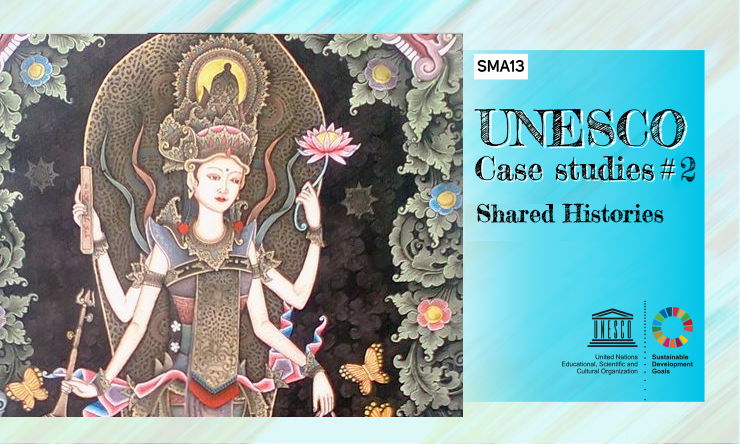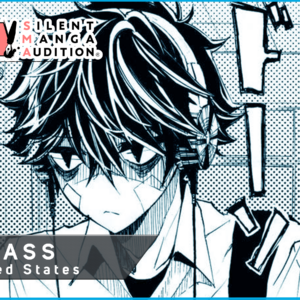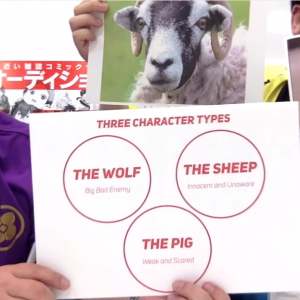
SMA13-UNESCO Round Case Studies #2: Shared Histories
23/10/2019
6 min read
Education should help to unite us to recognize our common humanity and shared cultural legacies. But in far too many classrooms, history has been “weaponized” to teach distrust and dislike of peoples from other countries, often based on nationalism and false stories. Bad history can then lead to racism and poor relations among many countries.
Lessons that unite ASEAN students
Real life consequences can be serious! Migrants seeking a better life, and contributing to the community and economy of neighbouring countries can face discrimination and even abuse. Politicians, too, can drum up hatred of “other” countries, leading to a lack of cooperation, distrust and even violence all based on revisionist history.
 But all is not lost. In South-East Asia, ethnic and language groups have been trading and sharing culture for thousands of years across today’s country borders. Shared Histories highlight common experiences and exchanges which are now bring taught in lessons adopted by schools courses across the region.
Some ideas in South-East Asia have widespread relevance, with topics such as “Peoples and Places” exploring pluralism (a system where two or more states coexist) and environmental impact throughout history. “Early Centers of Power” focuses on politics and the exchanges of culture, while “Rice and Spice” refers to the importance of life giving sustenance to every society and culture.
But all is not lost. In South-East Asia, ethnic and language groups have been trading and sharing culture for thousands of years across today’s country borders. Shared Histories highlight common experiences and exchanges which are now bring taught in lessons adopted by schools courses across the region.
Some ideas in South-East Asia have widespread relevance, with topics such as “Peoples and Places” exploring pluralism (a system where two or more states coexist) and environmental impact throughout history. “Early Centers of Power” focuses on politics and the exchanges of culture, while “Rice and Spice” refers to the importance of life giving sustenance to every society and culture.
 The broader global context is the subject of “South-East Asia and the World”, tracing interactions into the present day, including the colonial period that affected the entire region and whose legacy can be seen today.
In one pilot project, teams of secondary school and university students have competed in a “Hackathon” to create mobile and website apps that teach these ideas in a fun way. The winning team, for instance, designed a game in which players learn to plant rice under the watchful eye of the goddess Dewi Sri (a pre-Hindu and pre-Islam deity of rice and fertility), whose image can be still be seen throughout the cultures of South-East Asia.
The broader global context is the subject of “South-East Asia and the World”, tracing interactions into the present day, including the colonial period that affected the entire region and whose legacy can be seen today.
In one pilot project, teams of secondary school and university students have competed in a “Hackathon” to create mobile and website apps that teach these ideas in a fun way. The winning team, for instance, designed a game in which players learn to plant rice under the watchful eye of the goddess Dewi Sri (a pre-Hindu and pre-Islam deity of rice and fertility), whose image can be still be seen throughout the cultures of South-East Asia.
 Schools in different countries are using these lessons to teach students from different areas and different backgrounds the same themes that unite them. These students have a shared ownership of South-East Asian history and understand the importance of intercultural dialogue to build lasting peace and sustainable development for all.
Schools in different countries are using these lessons to teach students from different areas and different backgrounds the same themes that unite them. These students have a shared ownership of South-East Asian history and understand the importance of intercultural dialogue to build lasting peace and sustainable development for all.
 Helpful LINKS:
https://bangkok.unesco.org/content/shared-histories-hack-students-win-app-bridging-asean-divide
https://bangkok.unesco.org/content/promoting-intercultural-dialogue-and-culture-peace-south-east-asia-through-shared-histories
Helpful LINKS:
https://bangkok.unesco.org/content/shared-histories-hack-students-win-app-bridging-asean-divide
https://bangkok.unesco.org/content/promoting-intercultural-dialogue-and-culture-peace-south-east-asia-through-shared-histories

Forging peace through shared education!

Statues of the goddess Dewi Sri can be seen throughout SE Asia.
 Schools in different countries are using these lessons to teach students from different areas and different backgrounds the same themes that unite them. These students have a shared ownership of South-East Asian history and understand the importance of intercultural dialogue to build lasting peace and sustainable development for all.
Schools in different countries are using these lessons to teach students from different areas and different backgrounds the same themes that unite them. These students have a shared ownership of South-East Asian history and understand the importance of intercultural dialogue to build lasting peace and sustainable development for all.
 Helpful LINKS:
https://bangkok.unesco.org/content/shared-histories-hack-students-win-app-bridging-asean-divide
https://bangkok.unesco.org/content/promoting-intercultural-dialogue-and-culture-peace-south-east-asia-through-shared-histories
Helpful LINKS:
https://bangkok.unesco.org/content/shared-histories-hack-students-win-app-bridging-asean-divide
https://bangkok.unesco.org/content/promoting-intercultural-dialogue-and-culture-peace-south-east-asia-through-shared-histories
PENMARU’s TIP!“Maybe we aren’t so different after all! How could the benefits of a Shared History be shown in Silent Manga? What existing problems could be solved by learning of Shared History? Entries on this fascinating subject would be very interesting indeed!”





 “Maybe we aren’t so different after all! How could the benefits of a Shared History be shown in Silent Manga? What existing problems could be solved by learning of Shared History? Entries on this fascinating subject would be very interesting indeed!”
“Maybe we aren’t so different after all! How could the benefits of a Shared History be shown in Silent Manga? What existing problems could be solved by learning of Shared History? Entries on this fascinating subject would be very interesting indeed!”












